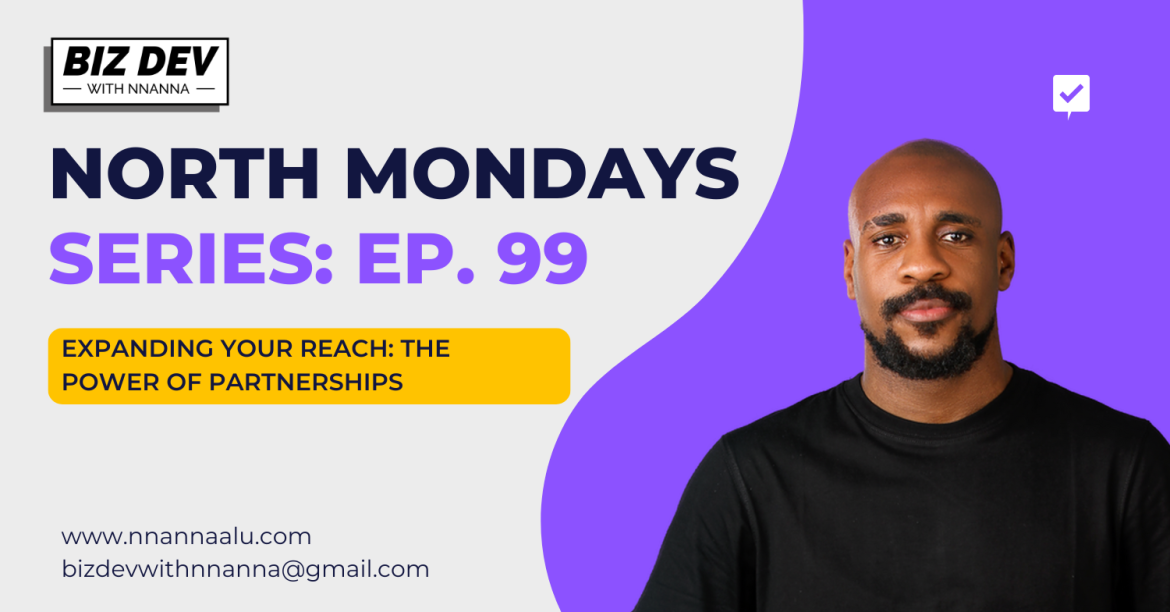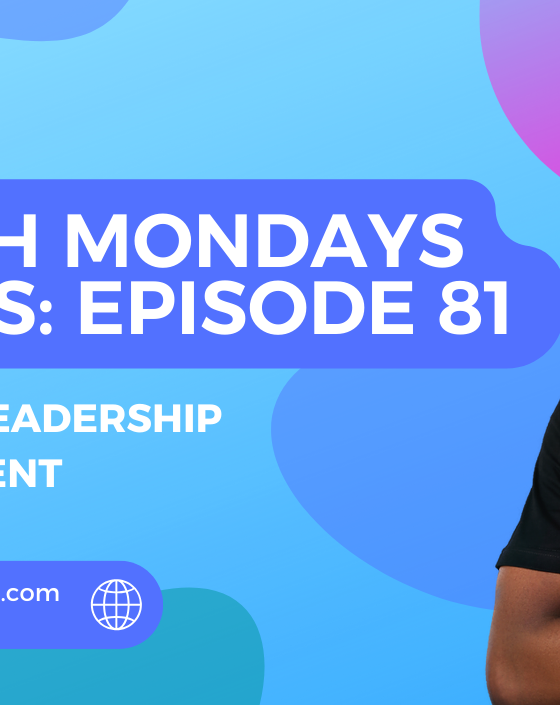Expanding Your Reach: The Power of Partnerships
North Mondays Series: Episode 99

Gala and La Casera were once the Jay-Z and Beyoncé of the snack world an unstoppable and iconic duo that just made sense. They didn’t need to belong to the same category to thrive together. Their greatness fed off each other, making life better for all of us. Now, imagine bringing that kind of magic into your business.
Here’s the truth: growth doesn’t happen in isolation. You don’ have to take my word for it, just ask Dominos and Coldstone creamery. If you’re serious about expansion, you’ll need more than just internal resources. The right partnerships can help you break into new markets, reach more customers, and offer better products or services.
But let’s be real, many businesses struggle to find the right partners, much like you’ve been struggling to find “the one” (no shade). Mismatched goals, poor communication, and uneven contributions often turn promising collaborations into disasters. Some companies, after one bad experience, swear off partnerships entirely. Others play it safe, only teaming up within their own industry—limiting their potential without even realizing it.
Cross-industry partnerships are shaking things up, helping businesses grow faster, innovate better, and gain a competitive edge. But how do you find the right partner? How do you avoid the common pitfalls? And most importantly, how do you use partnerships to actually expand your reach instead of wasting time on another talking stage that’s going nowhere?
Let’s break it down.
___________________________________________________________________________
Why Partnerships Fail (and How to Avoid It)
We’ve all seen great potential wasted because of avoidable mistakes. Here’s what usually goes wrong:
1. Mismatched Goals
A partnership only works when both sides are headed in the same direction. If priorities don’t align, disaster is inevitable.
Example: MTN and Visafone once teamed up to expand data services, but differences in execution led to friction. Eventually, MTN acquired Visafone completely.
Fix: Define clear goals before you shake hands. Ensure both parties have the same vision for the future.
2. Unequal Contributions
Nothing kills a partnership faster than one side feeling like they’re doing all the heavy lifting. If the benefits aren’t mutual, resentment creeps in.
Example: Some Nigerian banks initially collaborated with fintech startups to enhance mobile banking. But when banks saw fintechs eating into their revenue, they either renegotiated terms or went solo with their own digital services.
Fix: Make sure both sides bring something valuable to the table. Regularly review agreements to keep things fair.
3. Clashing Work Cultures
You know how some people plan dates for 3 PM but don’t show up until 6 PM? Now imagine that in a business partnership. If one company moves fast and the other drags its feet, frustration is inevitable.
Example: The merger between Diamond Bank and Access Bank must’ve come with serious cultural differences that had to be ironed out before they found their rhythm.
Fix: Beyond financials, make sure your work styles, leadership structures, and decision-making processes align.
4. Lack of Trust and Transparency
No one loves a sneaky partner. If one party is keeping secrets or not pulling their weight, it’s only a matter of time before things fall apart.
Example: When Etisalat Nigeria (now 9mobile) ran into financial trouble, its international partners withdrew support.Instead of a rescue plan, we got a whole new brand.
Fix: Communicate openly. Set clear expectations. And most importantly—put everything in writing.
___________________________________________________________________________
Why Cross-Industry Partnerships Are the Future
Gone are the days when businesses only partnered within their own industry. The real growth now comes from cross-industry collaborations—where companies from different sectors team up to create something new and exciting.
Why More Companies Are Doing This
New customers – Your partner can introduce your brand to an audience you wouldn’t have reached on your own.
Stronger products/services – Two companies with different strengths can build something better together.
Competitive advantage – A well-thought-out partnership can set you apart in ways your competitors never saw coming.
Examples of Cross-Industry Partnerships That Worked
Dangote x Jumia (Cement + E-commerce) – Who says you can’t buy cement online? Dangote partnered with Jumia to make bulk purchases easier.
MTN x Flutterwave (Telecoms + Fintech) – Enabling seamless mobile money transactions across Nigeria.
Guaranty Trust Bank x Food & Drink Festival (Banking + Hospitality) – GTBank created an event that attracts thousands annually, boosting both food vendors and the bank’s brand visibility.
Fifth Perfumery x Martell (Luxury Fragrance + Premium Liquor) – Blending luxury scents with fine cognac to create exclusive sensory experiences.
Each of these partnerships worked because they weren’t just picking partners based on physical qualities and social media validation, they brought real value to both parties and their customers.
___________________________________________________________________________
How to Find the Right Partnership for Your Business
1. Think Outside Your Industry
Your next great partnership might not be with a direct competitor but with someone in a completely different space.
Ask yourself:
Who serves the same audience as I do?
What brands offer something complementary to my business?
Are there gaps in the market that a collaboration could fill?
Example: A logistics company could partner with a food delivery service to optimize transportation and reduce costs.
2. Focus on Solving a Problem
The best partnerships don’t just create buzz—they make life easier for customers.
Example: Banks and mobile networks partnered to provide mobile banking, helping more Nigerians access financial services while boosting revenue for both industries.
Look at the challenges your audience faces, then find a company that can help solve them.
3. Set the Partnership Up for Success
A handshake isn’t enough. You need structure, accountability, and clear terms.
Define goals – What’s the purpose of this partnership?
Set measurable targets – How will you track success?
Stay flexible – The market evolves, and so should your partnership.
Before sealing the deal, ask:
How will decisions be made?
How will profits and responsibilities be shared?
What’s the exit strategy if things don’t work out?
___________________________________________________________________________
Final Thoughts
You can’t scale a business alone. The right partnership can accelerate your growth, expand your reach, and strengthen your brand.
The question is—are you being strategic about it? Or are you just waiting for a random “collaboration” to fall into your lap?
A well-executed partnership can open doors you never knew existed. The challenge? Finding the right fit and making it work.See you next Monday.








Recent Comments